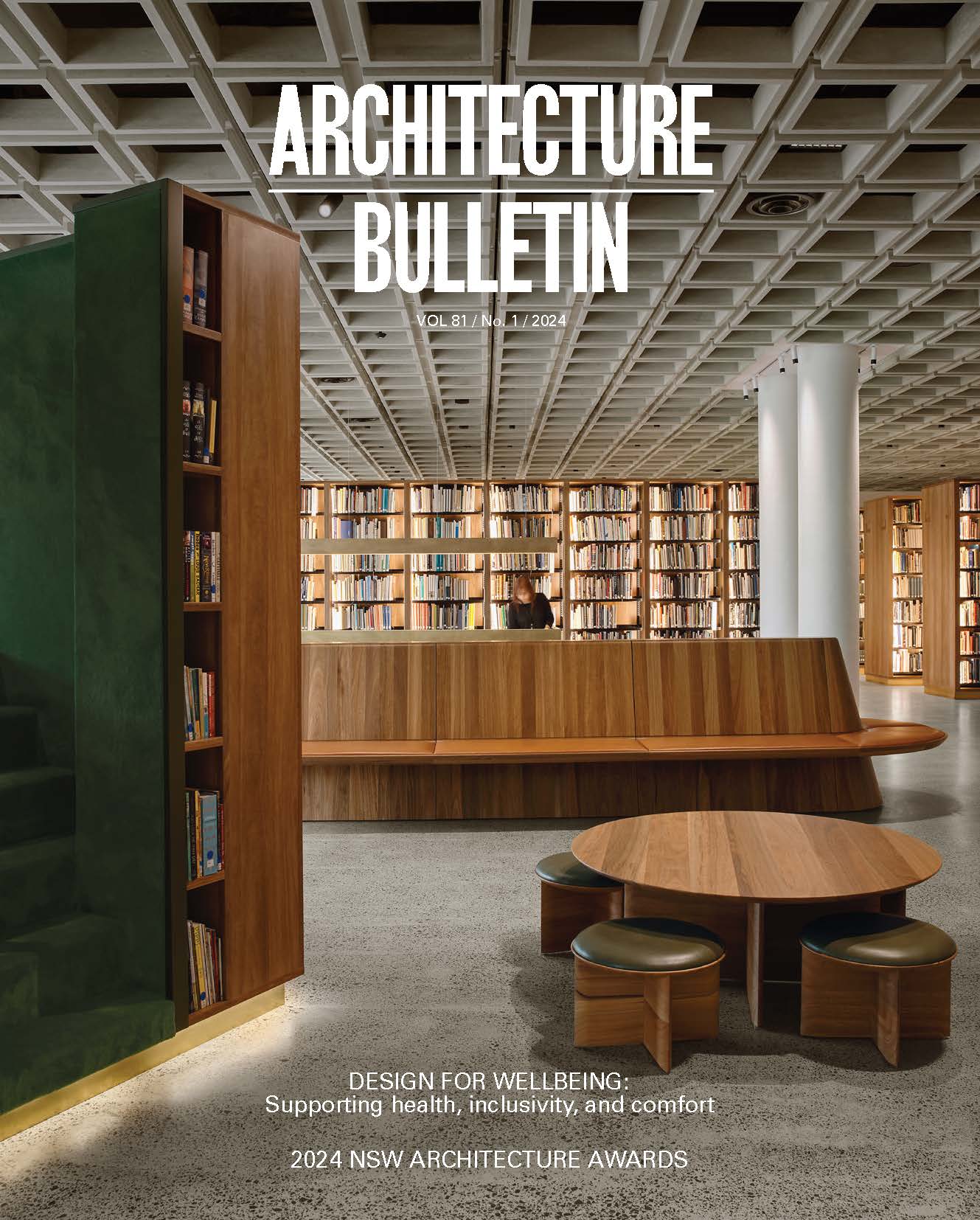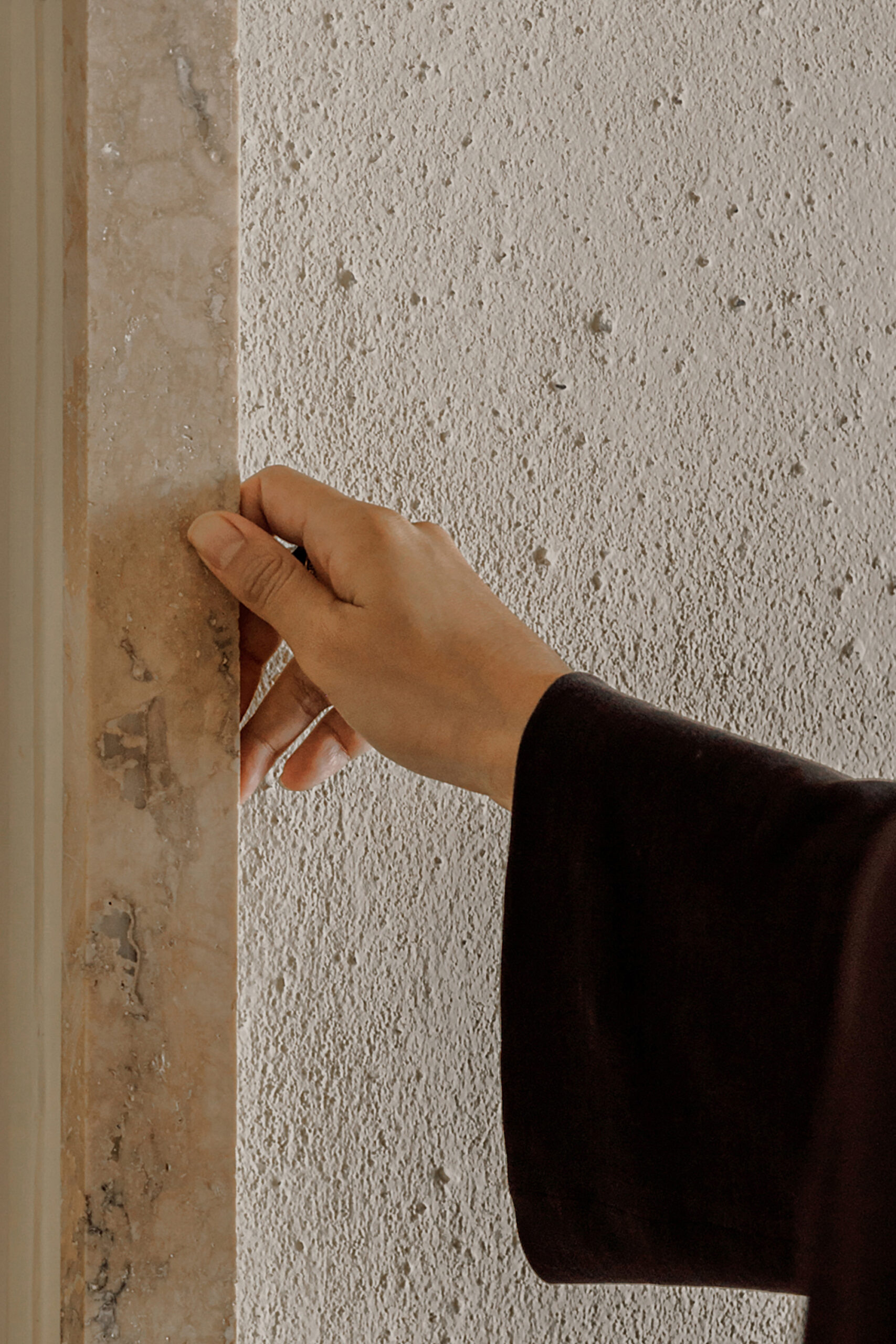How can architects measure the impact of design on wellbeing?
Words by Eilish Barry

Design decisions made by an architect have a fundamental impact on an inhabitant’s quality of life. Decades of research have shown how good design can enhance both people and the planet’s sense of wellbeing.1 The National Wellbeing Framework, released in late 2023, reflects the desire to consider the wellbeing of Australians alongside economic measures. We expect to see this framework influence the type of projects government invests in, and the evaluation of their value and success.2
To demonstrate and evaluate the extent to which architecture influences the wellbeing of people and the planet, architects need empirical and measurable data.3 The tracking and measurement of social value in practice can be the vehicle for this. While there’s no single, widely agreed definition for social value in Australia, the Green Building Council Australia (GBCA) recently released a working definition that “social value is the net positive change in social, environmental, and economic wellbeing of those directly and indirectly impacted by an initiative, project, or organisation.4
There is now an opportunity for architects to develop an agreed methodology and approach to benchmark and measure social value in their projects. So, where to begin. Social value can be created at every stage of a development, but it’s highly contextual. It’s critical that any project should start with authentic community engagement. The aim is to understand local needs before putting pen to paper.
Last year, Hayball developed an industry-first social value framework, in collaboration with the Australian Social Value Bank (ASVB), based on global-leading wellbeing literature. It sought to outline the social outcomes architects seek to create in their projects. Based on the results of community engagement, you can select the relevant outcomes for your project and its local context/needs.
Once these social outcomes have been agreed with the whole project team, the project can be designed through the lens of creating these outcomes. For example, Hayball are the executive architect in a large social and affordable housing project in Redfern. From community engagement, one of the local communities’ priorities was a consistent sense of safety. Therefore, much of the master planning, landscape, and built environment design decisions have since been focused on creating this outcome.

The agreed social outcomes can then be tracked throughout the timeline of the project, acting as a compass for design decisions throughout the project. We’ve found this particularly useful during the value management process. For example, we had a project where a sense of community was a priority for the future residents, so the choice of balustrade was critical to ensure safety but also visibility to other apartments. Throughout the project timeline, the choice of balustrade was not compromised despite the cost pressures due to the social outcome it could create.
Once a project is complete, the social value can be measured. We recently tested this process in our recently completed project CRT+YRD in Nightingale Village, Melbourne. Social value is best evaluated qualitatively, or with a mixture of qualitative and quantitative methods.5 Our data was collected through resident surveys and a social return on investment calculation by the ASVB. The results of this study gave evidence to the extent of change in residents since moving to CRT+YRD. For example, 93% of residents spoke to their neighbours more and 83% of residents felt a sense of safety due to the circulation design and passive supervision of the courtyard arrangement.
In the future, when more data is available, we hope to be able to forecast the potential social value created by a development and to confirm if this has been achieved after completion. These calculations are powerful tools. We could provide evidence for allocating resources to where they will create the most positive impact on people’s wellbeing. For example, it can help identify the design elements that should be incorporated or removed, depending on the social value that it creates. Or reflect on whether our design decisions delivered the outcomes we were hoping, which can help to inform future practice.
The built environment, particularly architecture and design, has a crucial role to play in the success of places and the quality of people’s lives. By placing wellbeing at the heart of design, projects will inherently be more liveable, socially cohesive, and desirable places.
We’re calling for architects and industry bodies to work together to develop common approaches and methodologies. With more frequent measurement, social value can be benchmarked and standardised. We believe that if the implementation of social value principles can be established at the beginning of new developments, the impact could be transformational for communities across Australia. Will you join us?
Notes
1 The Quality of Life Foundation – What We Do and Who We Are (qolf.org)
2 National Wellbeing Framework White Paper – Blix Architecture and Atelier Ten
3 Skidmore, R (2021) Measuring social value: Can we agree on a metric? The Developer. Available at: https://www.thedeveloper.live/places/places/ measuring-social-value-can-we-agree-on-a-metric (Accessed: 03 March 2023).
4 Social Value in the Built Environment: GBCA & Hassell. https://new.gbca.org.au/green-star/green-star-strategy/social-value/
5 Crossick, G & Kaszynska, P (2016). Understanding the value of arts and culture: The AHRC Cultural Value Project. Arts and Humanities Research Council (AHRC). http://www.ahrc.ac.uk/documents/publications/ cultural-value-project-final-report/
Eilish Barry is a project leader at Hayball. She has been leading Hayball’s research into the measurement of social value. Her research received the Alistair Swayn Foundation Design Thinking Grant in 2023 and the 2024 SIMNA Innovation Award for her pilot study.




